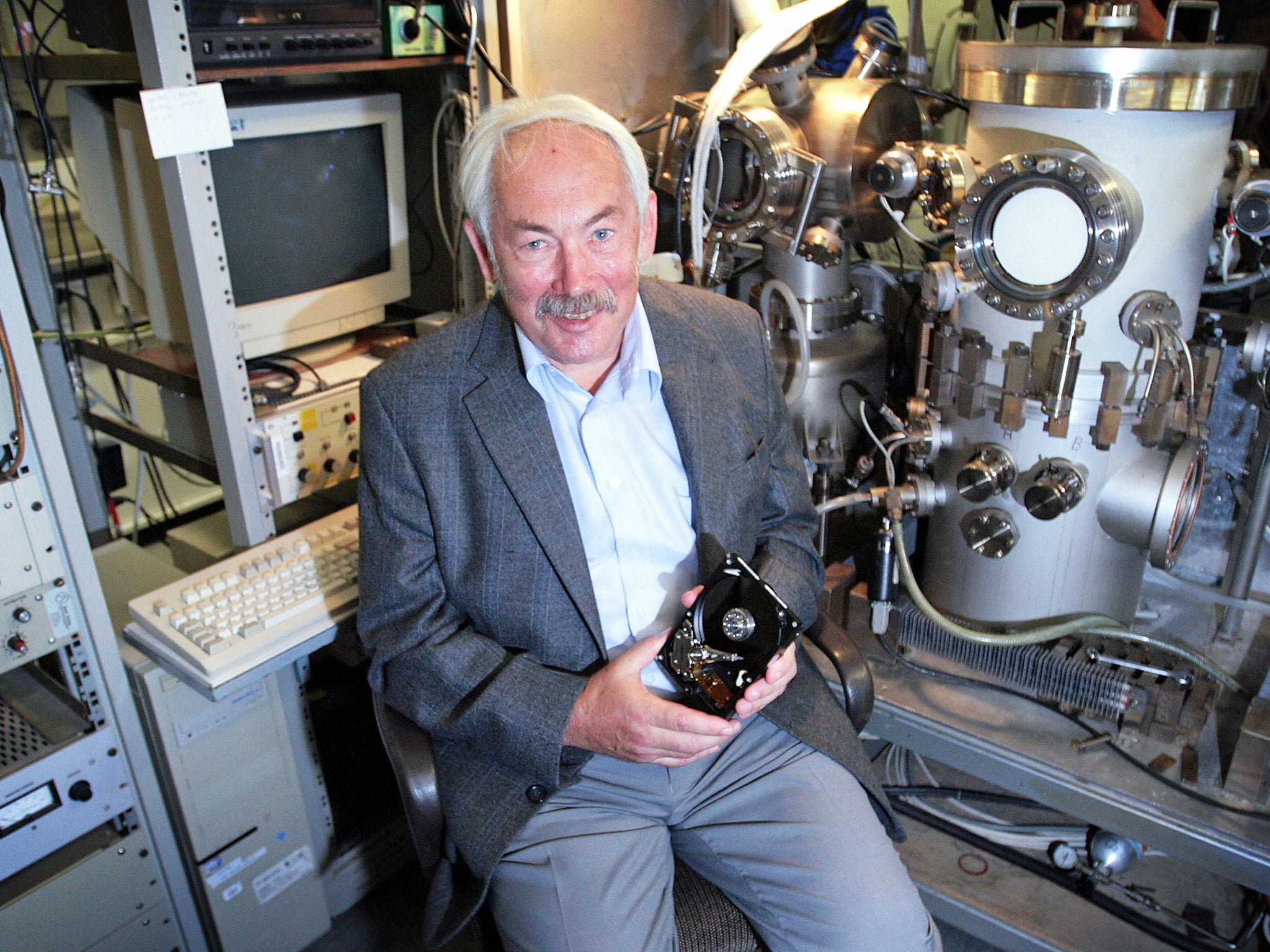Peter Grünberg: Nobel prize-winning German physicist whose work on data storage made smartphones possible
His work on manipulating the magnetic and electrical fields of thin layers of atoms to store vast amounts of data was key to creating iPads

Peter Grünberg, who has died aged 78, was the German scientist who won a Nobel prize for physics in 2007 – along with French physicist Albert Fert – for a discovery that made possible great advances in computer technology, by enabling the rapid reading of vast quantities of stored data.
His research identified a process known as “giant magnetoresistance”, which formed the basis for the fast, precise extraction of huge amounts of stored information through the harnessing of subtle electrical and magnetic effects.
Applications of giant magnetoresistance sprang from the demonstration that changes in the polarity of magnetic materials could act as a switch, with one polarity letting current flow and the opposite polarity halting the flow of the electrons that form currents.
In the techniques of giant magnetoresistance, sandwiches constructed of extremely thin slices of magnetic material made it possible for magnetism to exert a far more pronounced effect on current than had hitherto been known or suspected.
His discovery is said to lie at the heart of the operation of modern hard-disk drives with their storage capacities in the gigabyte range. Furthermore, almost anything that operates on the basis of reading vast quantities of internally stored information is said to rely on his work.
Grünberg worked at the Institute of Solid State Research at the Juelich Research Centre in Germany. In its statement, it said: “Without him, modern computers and smartphones as we know them today would be inconceivable.”
Modern computer and information technology depends on the binary system of ones and zeros, or up and down, or on and off, corresponding to the presence or absence of an electrical current.
Magnetic materials are well suited to a binary information system. Magnets may be polarized in one direction or its opposite, offering an obvious analogue to a system that is based in an infinity of yes-or-no questions and answers.
As developed by Grünberg, giant magnetoresistance showed a process by which it became possible to read the information silently stored in magnetic memories.
It relied on an interaction explained largely by quantum theory. Magnetism depends on the alignment of the spins of the electrons in magnetic substances. Current is the flow of electrons; and, in quantum theory, electrons possess spins.
If a current is sent into a magnetic material, the flow of electrons with spins pointed in one direction will be impeded by magnetic spins pointed in the opposite direction. Those electrons that make it through one layer will then be blocked or permitted to pass, depending on the orientation of the magnetic spins in the second layer.
In a disk reader, magnetic polarities are induced by the magnetic polarities in the memory device. And depending on the direction of the induced polarities, a signal will either flow through the layers of the memory device, giving a signal equivalent to a “1” or be squelched, giving a “0”.
It was the discovery of this property, of the ability of properly prepared and arranged magnetic materials to be a sensitive valve for current, turning it on and off, that pointed the way to modern memories and readers.
Peter Andreas Grünberg was born in Pilsen, in what is now is the Czech Republic. In explaining what it was that attracted him to physics, he told of looking at a model of the solar system as a child and wondering intently what made the planets orbit the sun.
Despite this curiosity, he recalled in a biographical sketch prepared for the Nobel prize committee, he was only an average physics student in his secondary school years. Nevertheless, he began studying physics at the Goethe University in Frankfurt and went on to the Technical University of Darmstadt, also in Germany.
His PhD thesis, completed there in 1969, used optical spectroscopy to determine splits in the energy levels of rare earth ions in garnets under the influence of the electromagnetic fields of the crystals. A great deal of mathematical computation was involved, and he remembered being urged not to lose sight of physical reality in a flood of numbers.
After almost three years of postdoctoral work at Carleton University in Ottawa, he took a post as a research scientist in 1972 at a new institute for magnetism at the research centre in Juelich.
His honours included the Wolf Prize in Physics in 2006 and the Japan Prize in 2007.
He retired officially in 2004 but, according to the Juelich Centre, had continued teaching physics until his death.
He married Helma Birge in 1966. Besides his wife, survivors include three children, according to the research centre.
Peter Andreas Grünberg, physicist, born 18 May 1939, died 9 April 2018
© Washington Post
Subscribe to Independent Premium to bookmark this article
Want to bookmark your favourite articles and stories to read or reference later? Start your Independent Premium subscription today.

Join our commenting forum
Join thought-provoking conversations, follow other Independent readers and see their replies